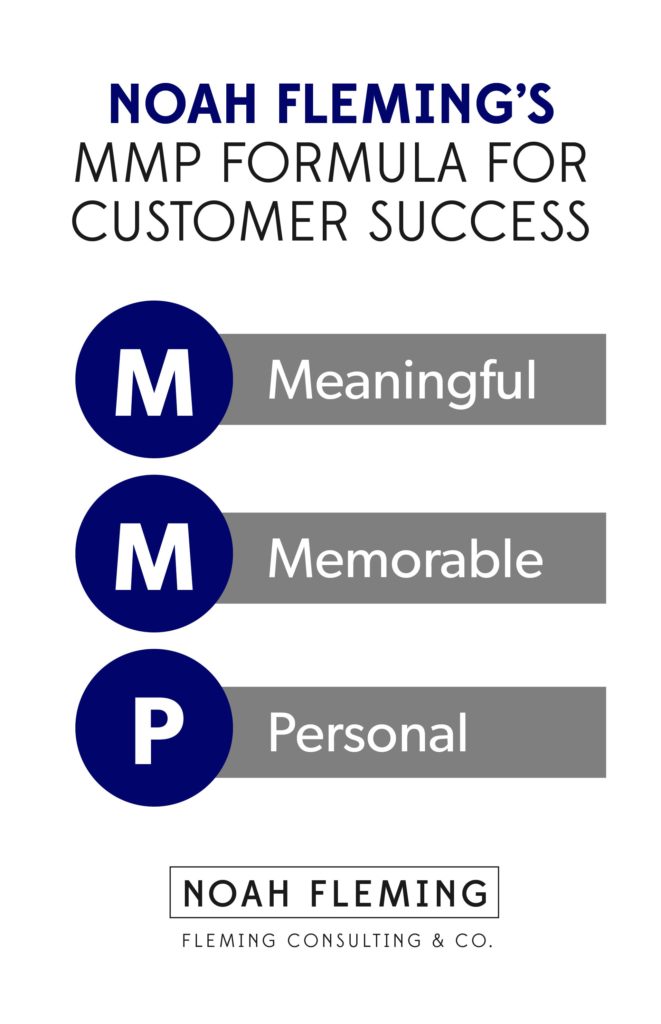I walked into a business I frequent regularly this past weekend. Nobody said hello. Everyone just kept their heads down and kept working.
I got a new bank card today from a platinum banking service and they spelled my name incorrectly.
These are one-off exceptions, and you know from previous Tidbits I very rarely rant about this sort of thing, but they provide a great framework for today's Tuesday Tidbit™.
If you want to provide excellent customer service and exceed customer's expectations, then you need to understand the power of personalization in a world gone mad with automation and cost cutting, and and how to balance that personalization with the automation of the right elements of your business to maximize the impact of that personal touch.
The customer experience must be meaningful, memorable, and personal.

That’s the critical question to always to consider when reaching out to your customer.
"Is this customer touchpoint meaningful to our customers? Will they remember it? And are we engaging them in a personal way?
Not one of the three – all of the three.
A "platinum level service" sending a bank card with the client's name spelled incorrectly misses the boat entirely.
Too many companies drop the ball when it comes to providing experiences that are personalized, positive, and consistent. Today more than ever, larger organizations are tapping into massive amounts of data to provide these more "individualized" experiences.
All companies of all sizes need to recognize the power of ensuring that experiences are personalized, positive, and consistent. Sometimes, this is as easy as making sure that you’re using the right language, and that the language you’re using is congruent with the experience you’re providing.
For example, something as simple as sending a letter to a long-time customer that reads, "Dear Valued Customer," can create feelings of resentment with that long standing customer.
How valued can they feel if you didn’t even bother to address them by name?
Or, if your automated phone service consistently tells customers “Your call is important to us. We’re experiencing higher than normal call volume, so you’ll be on hold until the next ice age.”
Was their call truly important to you?
Or did you just say that because everyone says that?
Did it come with the system? Was it too difficult for IT to change?
Organizations need to be mindful of how the experience starts and how the experience ends as two key opportunities to influence the mind of a new customer and one that becomes a loyal customer.
Does meaningful, memorable, and personal increase customer satisfaction?
Absolutely! In one famous study done with servers at a restaurant, they were able to significantly increase their tips, showing that customers felt better about the service, through a simple, straightforward strategy. The servers would bring table mints, and then before leaving, give the table “extra” mints. This simple, meaningful, memorable, and personal action alone increased tipping by 23% across the board.
What does this study show us? Primarily, it suggests that doing something to show your customers that you care about them (even in the smallest of ways), and offering more personalized and careful attention to them, can significantly increase customer satisfaction. Note, of course, that this will stop working the minute that customers recognize it as a catch-all strategy – then, it’s no longer personal.
Your Challenge For This Week:
Look at the most common customer touch points and ask what you do to make them more meaningful, memorable, and personal. More importantly, find ways to empower your people to go “over and above” (even in very small ways) to create that personal touch.
For example, after someone buys, consider calling to thank them personally. Simple.
Don't forget the power of the handwritten notes. Hardly anyone is using it and it always generates a beautiful response.
If someone books a stay at your hotel, instead of emailing them a confirmation letter, call them to follow-up. If someone has purchased something from you, or you've installed someone at their place of business, stop by every once and a while and check it out. Ask how it’s working
Finally, depending on what type of business you're in, categorize your clients even further. Make a note of out their interests personally and professionally. Here's what I mean. For me, it's simple, I usually take on about 6-8 large projects a year keeping my client base relatively small at any one time.
I have many coaching, mentoring, and speaking clients, but the larger projects I'm engaged in are manageable to the point I know a lot about each one of their businesses. I'll routinely capture and maintain articles, stories, and things I find that might be of interest to that client.
I'll keep a file and send them once a month. I'm not suggesting everyone gets something monthly, but if I have a client in the funeral industry and see an interesting piece of content in the New York Times on that specific industry, I'll clip the article and forward it with a brief, personal note, "Shawn, this is interesting as it related to the work we're doing with your sales team. What are your thoughts?" It's meaningful, memorable, and personal. There's nothing malicious about this. It's purely added-value and shows my customers I care.
It might be impossible to scale this to hundreds or thousands or millions of customers, but it doesn't need to be. I have another client who has a keen interest in fishing – so do I. I'm always sending him interesting things I see, and he appreciates it.
Meaningful, memorable, and personal. It doesn't get much more difficult than that.
If you're not using my Pick-3 process, you're missing a wonderful opportunity. This dead-simple process is being used by world-class champions, massive organizations with tens of thousands of employees, small independent retailers, and many more. Best of all, I give it away freely. If you need a copy, get in touch.
